To better understand ramen (ラーメン), we start our series with a blog post about the origin, characteristics and types of ramen.
Those who have not yet looked into the subject may be surprised: ramen, which has become very popular in large parts of the world, firstly has a fairly short history and secondly is, strictly speaking, fast food in Japan. In typical Japanese fashion, it also proves that you can feed masses of people in a very short time without compromising on the quality of the food.
A highly impressive example is also the school lunch in Japan, we recommend taking 20 minutes to watch this video.
The origin
Ramen evolved from Chinese cuisine, so much is clear. What is less clear is when exactly the Chinese noodles found their way to Japan. Here, opinions sometimes diverge considerably, the earliest assumption being the second half of the 17th century, the other theory the late 19th century.
However, ramen only gained its current enormous popularity after the Second World War. Now, fast-food restaurants called ramen-ya emerged in Japan, where an enormous number of these dishes are eaten every day (and at an astonishingly fast pace, too). It is estimated that there are over 200,000 ramen-ya, including over 5,000 in Tokyo.
Ramen is great to be prepared on a large scale, quick to serve and contains all the ingredients of a substantial meal. It was a perfect combination for the industrialising country, which was now also importing cheap wheat.
In the 1980s, ramen again boomed considerably and was now offered by entire chains of fast-food restaurants. At the same time, the number of variations increased, and today there are also distinctive regional specialities.
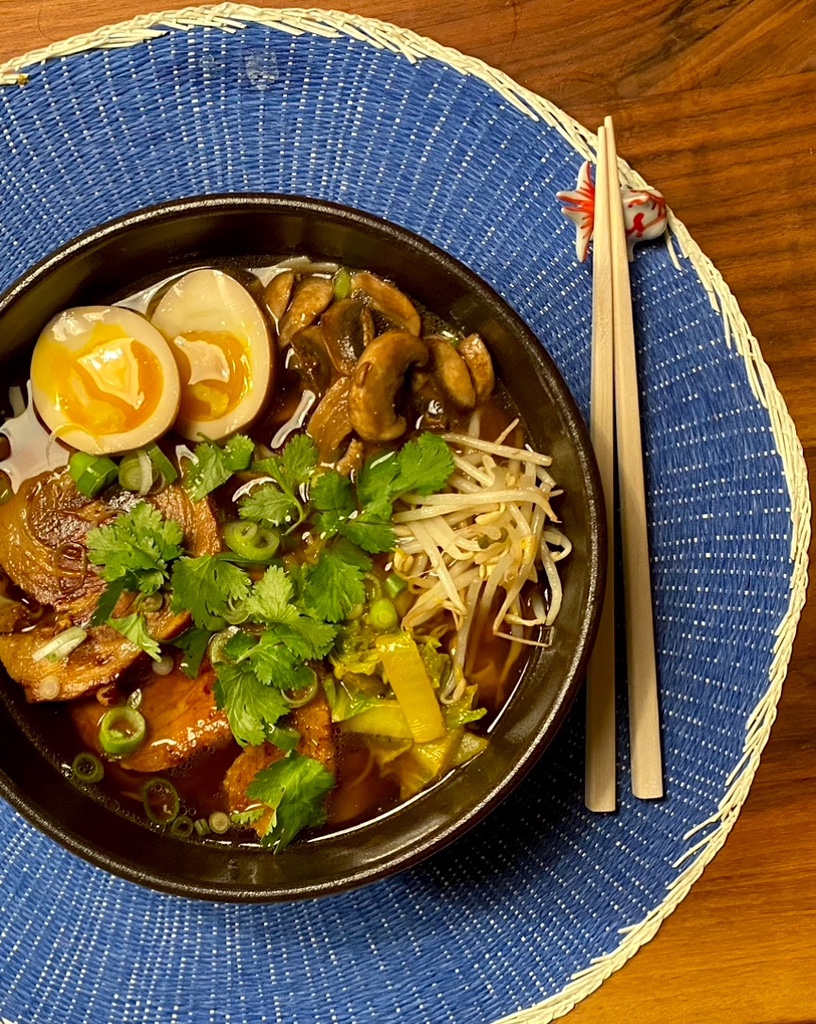
The characteristics
One usually reads that ramen consists of the four elements broth, a seasoning (“tare”), noodles and toppings. Strictly speaking, however, there are five elements, because a seasoning oil is also very important.
Every cuisine has its own recipe for broth, all of them more or less secret and each the best of all. The most common varieties are: Chicken broth, where plenty of chicken feet are popular for flavour intensity and texture, they contain a lot of collagen. Broth made from pork bones (“tonkotsu”), which is milky and very creamy, also because of the collagen. Chicken broth, on the other hand, is usually clear, but there are milky variants here too (“paitan”).
These broths are combined with typical Japanese ingredients such as konbu (seaweed), katsuobushi (bonito flakes) and/or dried shiitake mushrooms or Japanese basic broth made from these ingredients, dashi. Dried fish and dried seafood are also used.
Of course, there are also vegetarian and vegan ramen and we will present recipes for both. Rarely encountered, however, are ramen made with beef broth or only seafood, and we will therefore not deal with either, at least not at this stage.
It is important to understand that the broth is the main ingredient of any ramen, and the taste experience stands and falls with it. It is therefore important and worthwhile to pay particular attention to this ingredient. Although you can find many recipes for a “quick” ramen broth on the internet, we will not present anything like that. Instead, we will explain the art of cooking a good broth and suggest recipes that produce fine results at home with reasonable effort.
The next element is called tare, which is a seasoning that also leads to a certain type of ramen. A typical tare can be a flavoured mixture of soy sauce (shoyu) and mirin (sweet rice wine), a miso paste, a sesame paste or curry.
The types
These combinations give rise to the most diverse variations, the most common basic types being:
Shio (salt) ramen (塩ラーメン). Clear broth based on chicken, delicately seasoned.
Shoyu (soy) ramen (醤油ラーメン). Clear broth based on chicken, darker in colour and flavour.
Miso Ramen (味噌ラーメン). Milky due to the addition of miso paste. Can be based on chicken or pork (or both).
Tonkotsu Ramen (豚骨ラーメン). Pork broth, milky, creamy and very rich.
Toppings and especially spicy oils then provide other types. For example, chopped, spicy fried meat is added to a tantan ramen (タンタン麺).
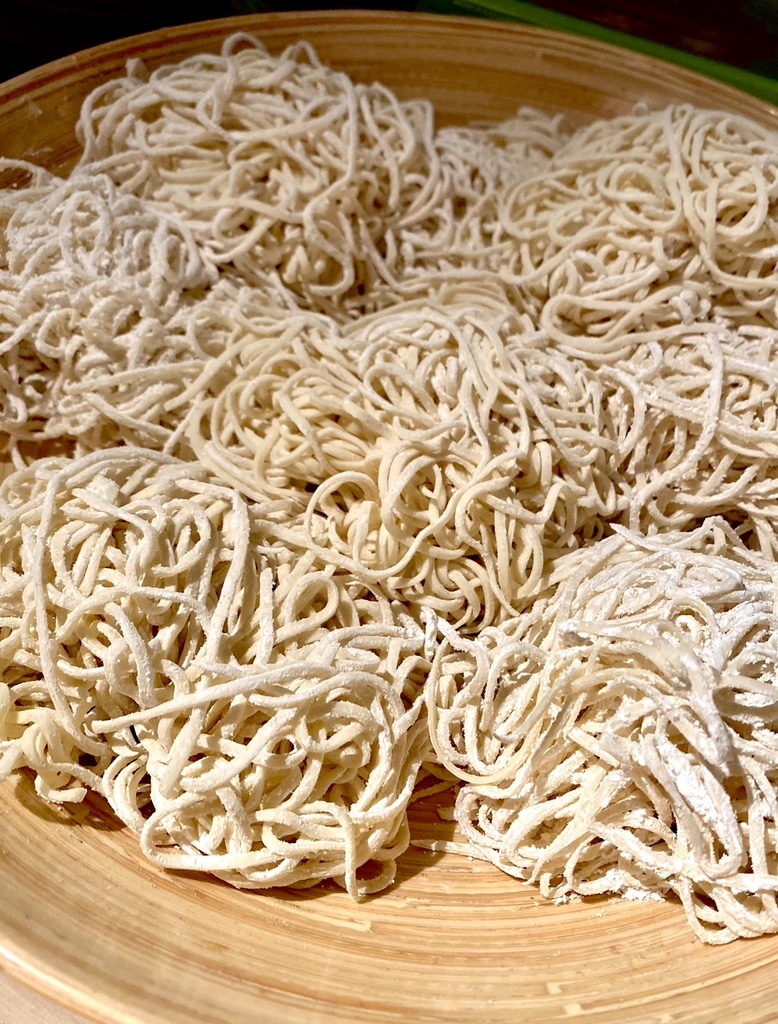
The noodles
After all, ramen calls for a very special kind of noodle that is not easy to make at home because of its low water content (we will of course present a recipe anyway, because as always, homemade simply tastes best).
Ramen noodles usually consist only of wheat flour, water and salt. In Japan, water with a high proportion of potassium and sodium carbonate is used for this, an alkaline solution that ensures a longer firmness and a yellowish colour. Outside Japan, you can help yourself with a simple trick, which we will also explain.
The toppings
Everything that the region and season has to offer is possible here. Just don’t overdo it, because the broth and the noodles are the centre of every ramen.
Typical toppings in Japan are:
Chashu (grilled or braised pork), tamago (soft-boiled pickled egg), narutomaki (a fish cake), wakame (a type of seaweed), nori (dried seaweed leaves), Beni-Shoga (pickled red ginger), Menma (pickled bamboo shoots), Moyashi (crunchy soy sprouts), Ishikura (spring onions), Tomorokoshi (corn), Horenso (spinach), Shiitake.
Not all of this, but a lot of it, will be shown and explained in detail here soon.
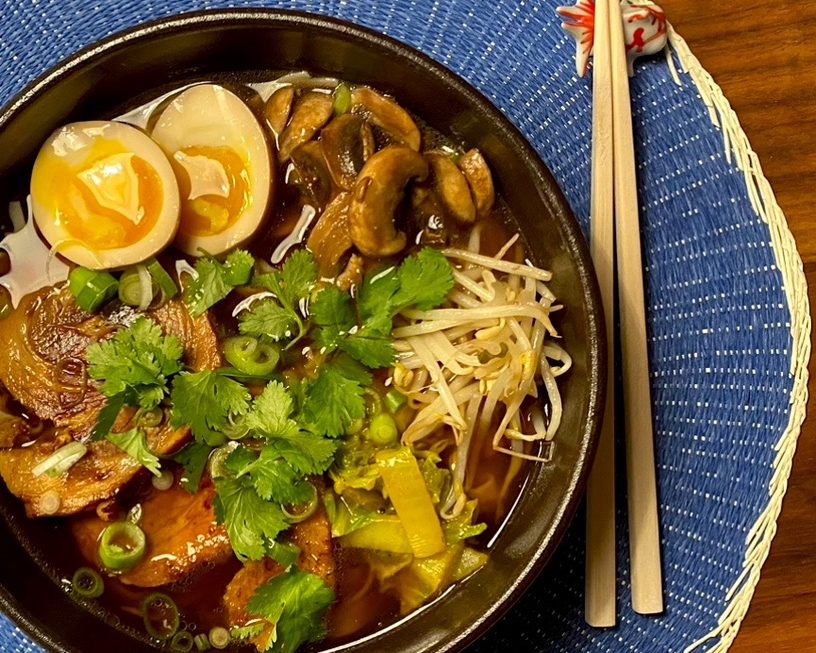
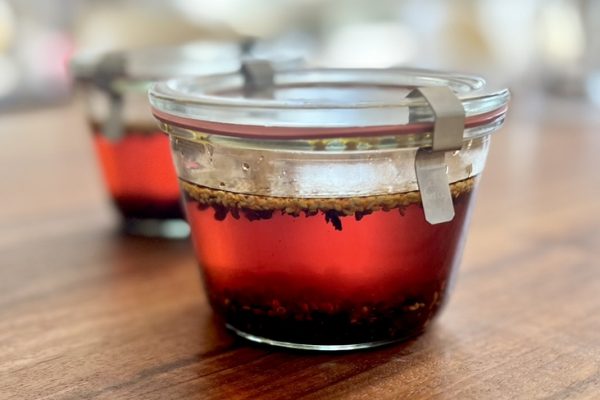

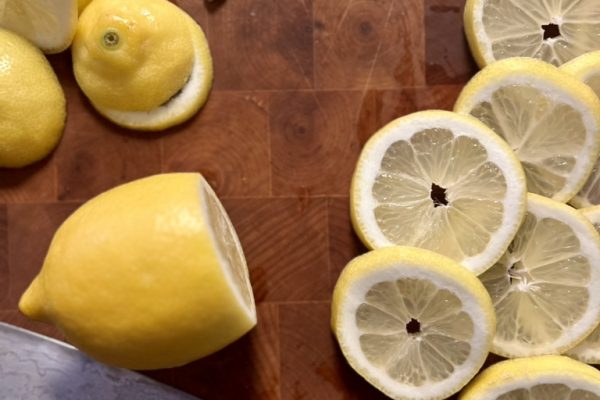


4 thoughts on “Ramen”